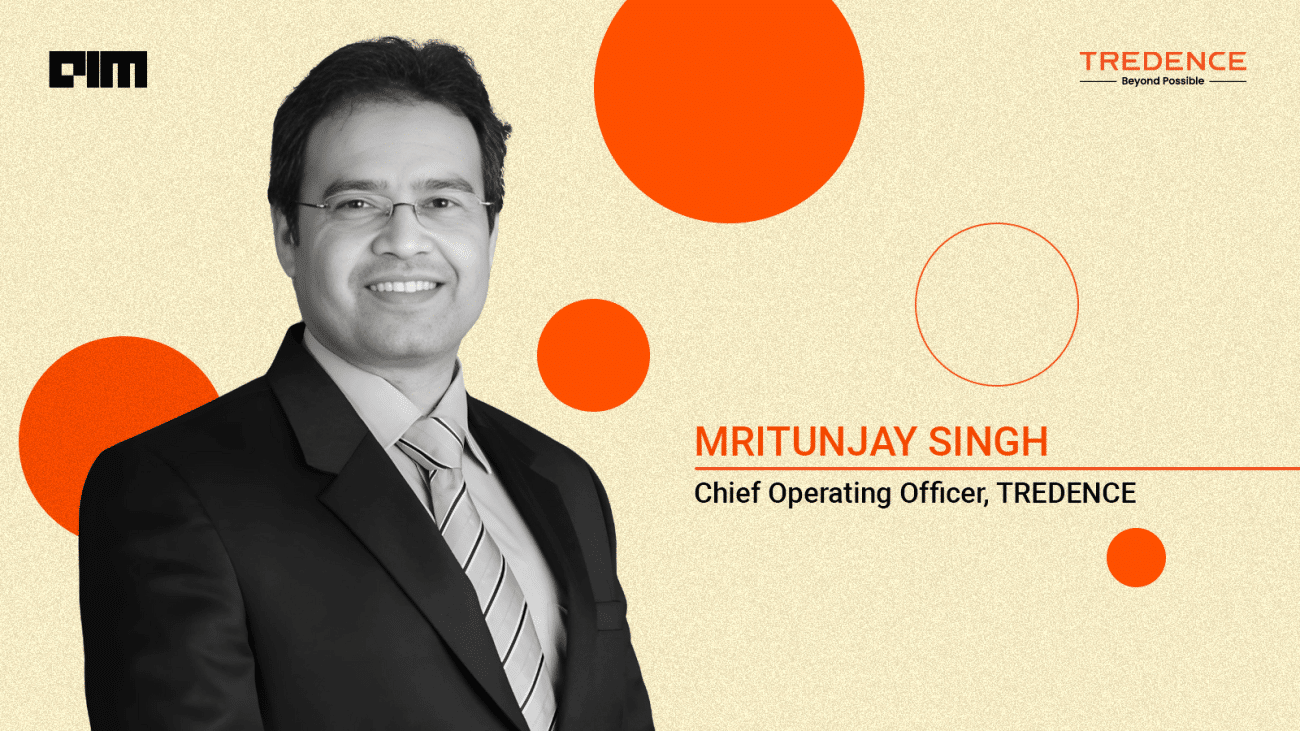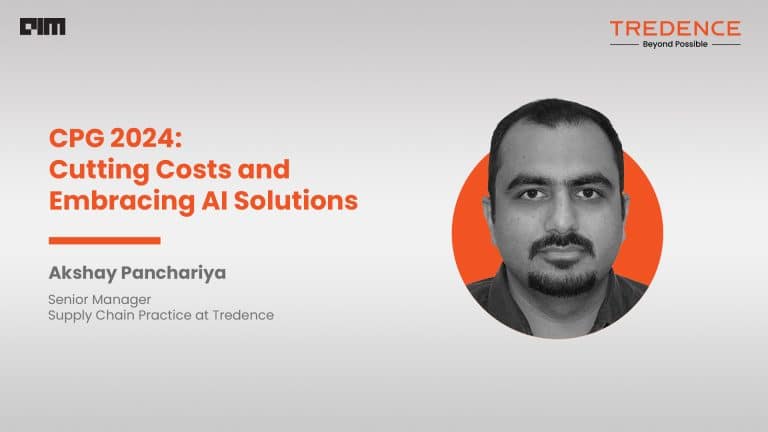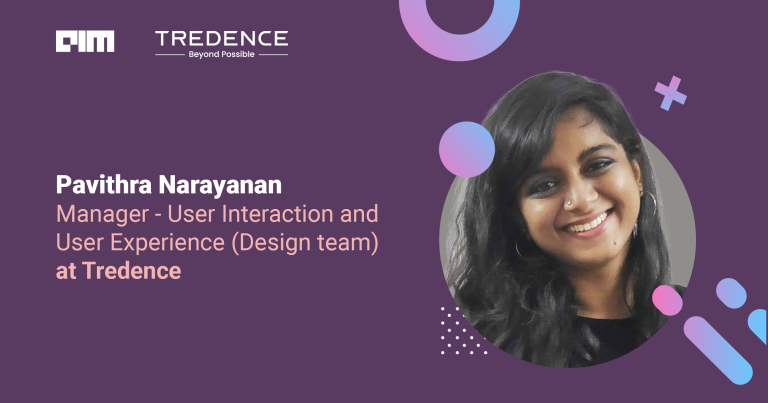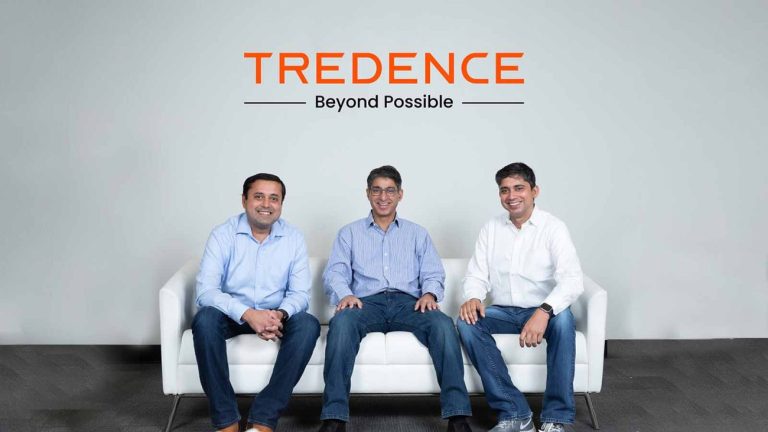AI is no longer a futuristic concept. It is actively reshaping industries and unlocking new opportunities for businesses. Recent advancements in large language models (LLMs) have only accelerated this shift, firmly cementing AI’s place in the mainstream.
Amidst this transformative phase, Tredence, a global data science and AI solutions company, is embracing this revolution with an AI-first mindset that enhances decision-making, reduces operational costs, and accelerates insight generation for enterprises across industries.
Speaking with AIM, Mritunjay Singh, chief operating officer at Tredence, emphasised that the company’s approach to AI is not just about incremental improvements — it is about redefining problem solving through AI-powered decision systems that deliver real business value by improving efficiency, cutting costs, and driving measurable impact.
“We operate at the intersection of domain expertise, data science, and decision intelligence—transforming insights into impact. If you look at all these new GenAI digital assistant frameworks, we are already implementing them at scale,” Singh said.
Deterministic to Probabilistic Systems
“AI innovations like OpenAI’s models or DeepSeek will continue to evolve, and so will we,” said Singh emphasing on how Tredence is built on agility and adaptability, enabling the company to pivot and integrate the latest advancements seamlessly.
At its core, Singh highlighted that the ability to transition from traditional, deterministic systems to dynamic, probabilistic ones creates a powerful foundation for the future of service delivery— this is what makes Tredence’s offering so special.
Traditional systems are tactical, disjointed, and designed for fixed outcomes. In contrast, Tredence is shifting towards probabilistic systems, which enable decision-making based on probability, risk, and contextual factors.
This shift has enabled the company to improve project efficiency, reducing project timelines by 50% and accelerating insight generation. Through AI automation, clients see a 40-50% reduction in operational costs by lowering people and software expenses.
Singh said the company’s core belief is not just about predicting the future but about building agility as a strategic advantage. By enabling clients to navigate uncertainty and adapt swiftly, Tredence helps them maximise business impact and stay ahead of change.
“If they’re spending $1 on me, they should get at least $10 of benefit,” Singh added. This focus on delivering substantial business impact is reflected in the company’s success. Notably, Tredence acquired 50+ clients in the past year alone.
This approach aligns with McKinsey’s recent research report, which notes that while 92% of companies plan to increase their AI investments over the next three years, only 1% consider their AI deployment mature. This indicates a need for continuous adaptation and learning.
The Future is AI + Humans
Although Tredence is heavily invested in AI, it doesn’t overlook the importance of human capital. Given the rapidly evolving nature of AI, continuous upskilling and repurposing of talent will be essential.
The company quarterly trains 100+ fresh graduates through a six-week structured learning program and repurposes ~20% of its employees into emerging technologies, including AI, GenAI, Agentic AI, Edge AI, AI-powered automation & simulations, and multimodal AI systems. The company hired 1600 people last year and plans to hire a similar number this year as well
Tredence focuses on hiring people with strong fundamental problem-solving skills.
“We hire for adaptability and problem-solving skills rather than specific expertise. Our focus is on candidates who can learn quickly and think critically,” Singh said.
The company also has a merit-based remote work model, allowing high-performing employees who understand the company culture to work remotely without compromising productivity.
Tredence’s initiative, Anubhav, is a platform that serves as an inaugural graduation ceremony of sorts, welcoming not only employees but also their families into the organisation. This initiative exemplifies the company’s human-centric approach to AI by prioritising inclusion, emotional connection, and community. Through Anubhav, Tredence reshapes workplace culture.
The company actively integrates AI into its human decision-making by deploying digital assistants that enhance both speed and accuracy. These AI-driven assistants reduce decision-making time by 50-60%, optimize frontline decision-making by providing real-time insights, automate routine processes, and refine strategic actions across industries.
In a retail-specific use case, AI-powered insights have enabled businesses to forecast demand and set pricing at an item-level for each store, rather than at a store-wide level. This has allowed retailers to implement dynamic pricing strategies, such as charging a premium for high-demand products in specific locations and strategically bundling complementary products to drive higher sales.
In healthcare, the company leveraged data and a digital assistant to improve the accuracy of pre-diagnosis from 40–50% to 93%. By integrating diagnostic data and AI-driven recommendations, the system identified high-risk cases for malignancy testing earlier and more accurately, significantly reducing diagnosis time from a week to just 10 minutes.
Overall, Singh envisions a future driven by AI-powered assistants that go beyond task-based automation. These assistants will integrate into enterprise workflows, proactively surfacing insights from data, emails, and interactions to empower professionals with intelligent decision support.
Tredence is also piloting a centralised AI-driven knowledge repository that makes all internal intelligence—presentations, emails, and documents—instantly accessible to employees, enhancing collective learning and efficiency. Singh envisions a future where AI-driven digital employees become indispensable co-workers, not replacements.
Much like past technological leaps that amplified human potential, these AI counterparts will elevate service delivery, working alongside humans to enhance efficiency, creativity, and decision-making.
“If competition does it in six months, we will be able to do it in three months,” Singh concluded, emphasising Tredence’s commitment to speed, efficiency, and customer value.


























